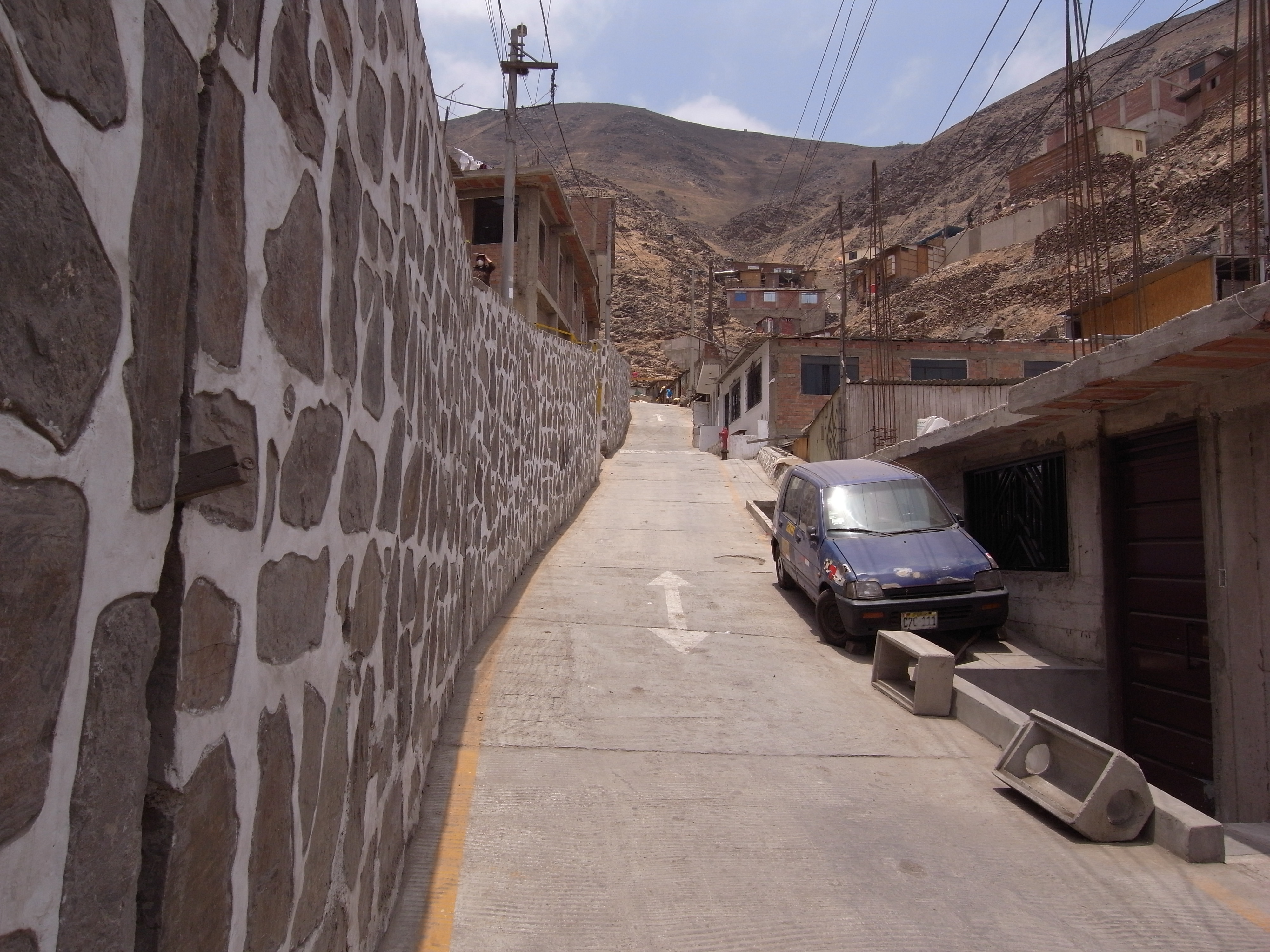Unplanned city emerges
Self-organizing cities
Unplanned city has been emerging out of the foothills surrounding Lima. Self-built small houses pop-up and grow attached to very steep slopes. This land is subdivided and lots acommodate to the appropriated space. Meanwhile, access routes are delineated linearly and converserly with the constraints of both the slopes and the boundaries of the lots, providing room for the emerging puplic space. Social action is the driver of this auto-organized urban fabric in permanent change.
This type of urban development has long tradition in Lima. From the initial political impulse from libertarian Pedro Beltran, Prime Minister in the 1950s; it was studied systematically by Turner, who interpreted this action as autonomous operation of individuals pursuing a novel and long term way to achieve both housing and financial freedom.
These interacting self-interested individuals configure the foundation of the process. They are the agents of transformation of the materials and labour into the physical shape of the built space.
Properties of housing
Also an underliying feature is the social relations of production that permeate the actions across the transformation. Decision-making is influenced by other agents not only the household peers at their scale of activities but the rules, institutions formal and informal that also operates at the same scale creating the territorial coherence.
Beyond the defined scale of self-built operation and the interwoven of urban fabric, social relations of production operates as well. The actual location of these actions at marginal land in the boundaries of the formal city is a result of the free market operation.
Property over this single detached houses is a necessary attritute to allow self-building. Multigenerational composition of households is another property that influences growth. The common case is that of a single owner taking decisions over the present and future of its property, even as independent families within the household occupies diferent house spaces, it has not usually been observed the fragmentation of property.
 Urbanización informal en una ladera de Lima (Fuente: Victor Peña Guillen 2020)
Urbanización informal en una ladera de Lima (Fuente: Victor Peña Guillen 2020)
Dynamics and power
Cozzolinno and Moroni 1, suggest property arrangements (dynamics) influencing the activities (power) in self-organizing cities (substance). Thus, the dynamics of social relations realize in decisions over the construction process. The continuous transformation of the informal city becomes the social and physical spaces, producing the scales of territorial congruence. A representation of these phenomena, more useful for management than for asking questions, is the complex adaptive system, the socio-spatial network.
These authors suggest that “in the case of small-scale objects it is easier to make rearrangements”. This statement could explain the resilience of the informal housing facing economic turnarounds in the household expressed as non-linear income stream, which determines decision to build.
Reference
-
Cozzolino, S., Moroni, S. 2021. Multiple agents and self-organization in complex cities: The crucial role of several property. Land Use Policy 103. Elsevier. ↩